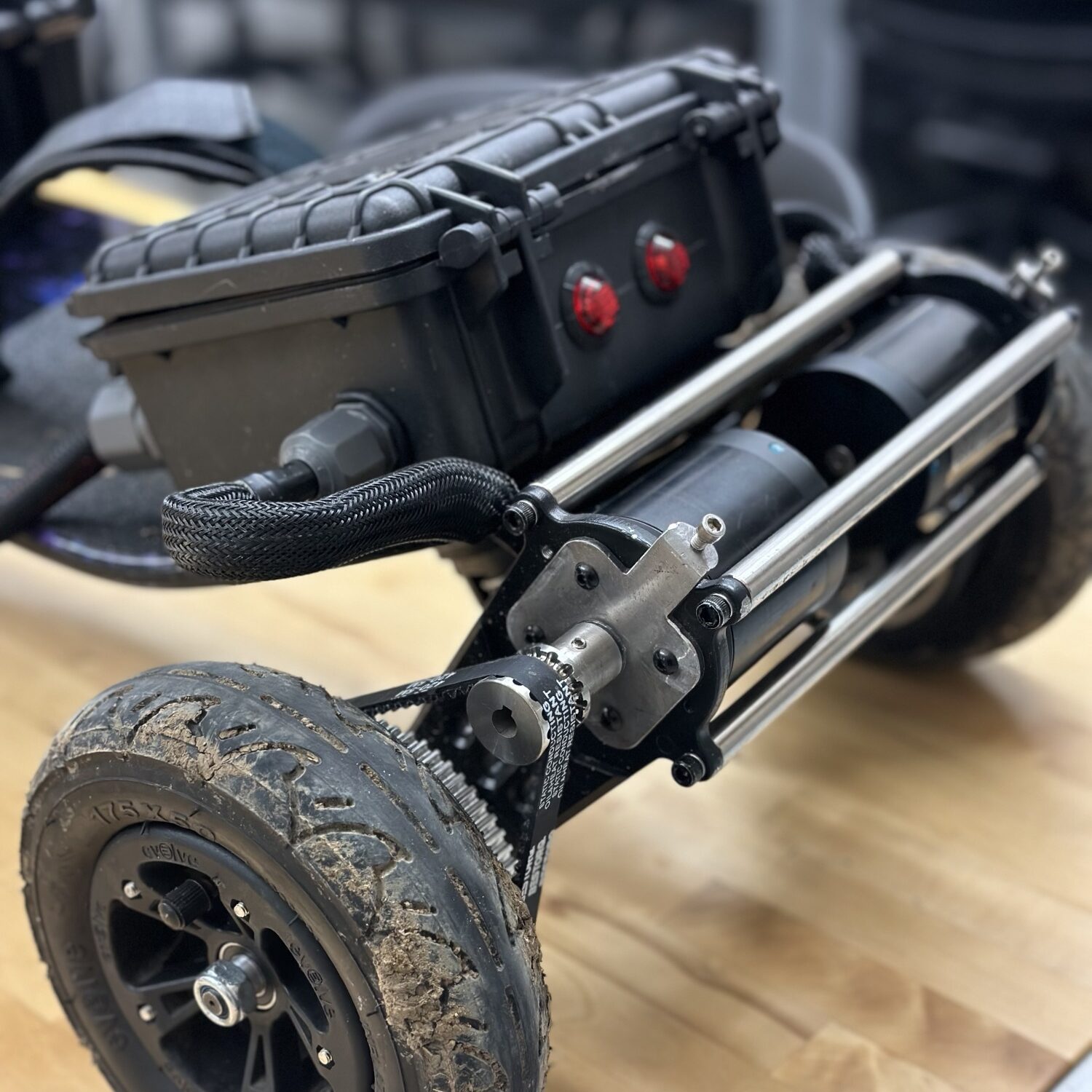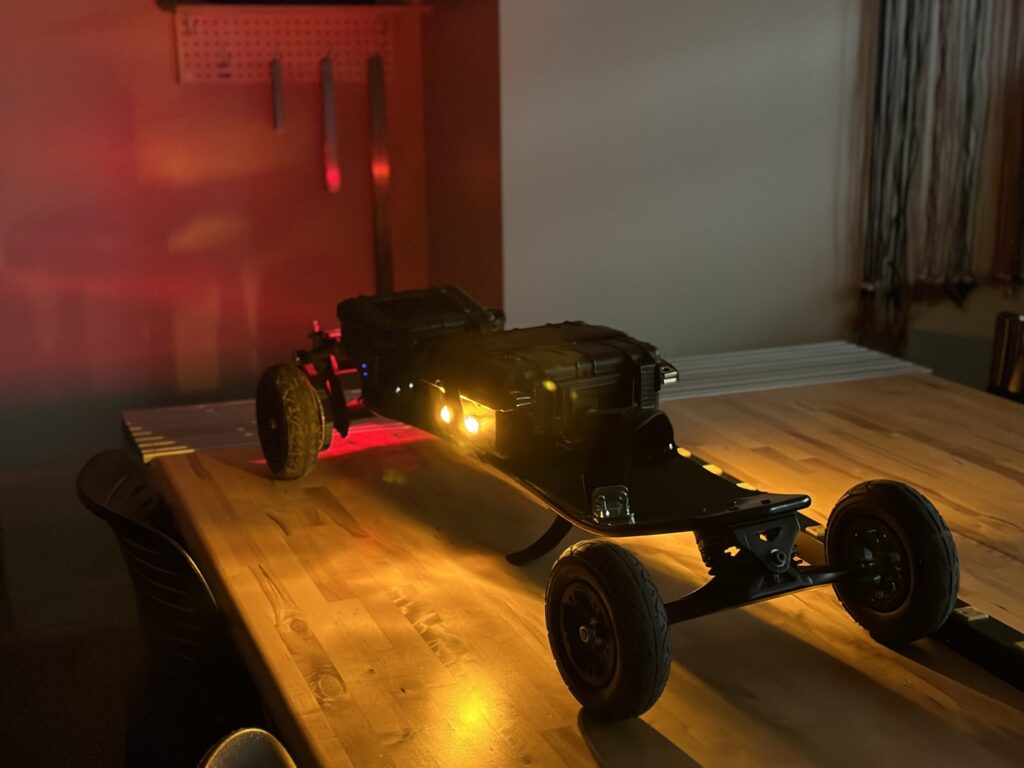I’ve long been interested in electric vehicles and micro-electric vehicles. Mainly, I love it because this mode of powertrain is really fun, efficient, and scalable.
Problem Definition
I sought to create an electric longboard with the following requirements:
- High-speed – Must be capable of going 20-25mph
- High-torque – Must be capable of maintaining 15-20mph on an 8% inline
- Large Wheels – Must be capable of driving and handling comfortably on grass, dirt, and gravel.
- Ground Clearance – Must be capable of vertically clearing small rocks and debris.
- Range – Must be capable of traveling the full distance from my home to school and back (4 miles round-trip) with a comfortable margin-of-error. 8-10 miles range.
Design and Manufacture
Powertrain
- Used Fusion 360 to design motor and wheel belt pulleys as well as an adjustable belt-tensioning motor mount plate.
- Machined pulleys with a CNC mill, metal lathe, and wire EDM.
- Produced the belt-tensioning motor mount plate by cutting it out on a CNC plasma cutter, and bent the end with the adjustment screw on a manual brake.
- Turned aluminum axle spacers on the metal lathe to minimize cross-loading of bearings.



Electronics
- Two Flipsky 190 kV 3500W 6374 BLDC electric motors.
- Stormcore 60D+ VESC Inverter to control motors.
- Constructed a 12s4p battery pack with Epoch 30P 18650 Li-Ion cells and a battery management system (BMS).
- DC-to-DC converter to power low-voltage 12V system (lights) from main battery.

The Rest
- Two foot bindings (without heel straps) for better control
- Mountainboard Spring Trucks found on AliExpress
- MBS Colt 90 Mountainboard Deck
- Evolve 7″ Pneumatic Skateboard Wheels + Tires
Results
- Top Speed – The math says this gearing, motor, inverter, and battery combination will go 45 mph on a full charge on level ground. But alas, I value my safety a little bit more than that, so the fastest I’ve gone is 36 mph. Even then, I enabled an electronic limit of 23 mph so that, above which, the motors will produce no torque. This exceeded the design requirement for speed.
- Torque – It comfortably accelerates on hills steeper than the required 8% in addition to maintaining the maximum speed I set in the inverter’s firmware.
- Large Wheels / Ground Clearance – The large pneumatic wheels, flexible deck, and spring trucks enable a very smooth, controllable ride on grass, gravel, and others.
- Range – The final product does pass the initial design requirement of 8-10 miles, but not by much. Ultimately, the range is 12 miles.





